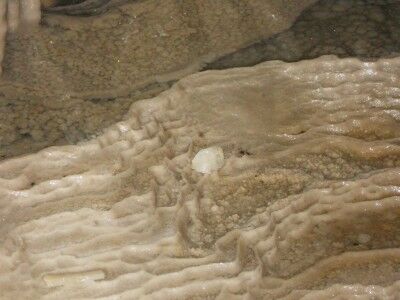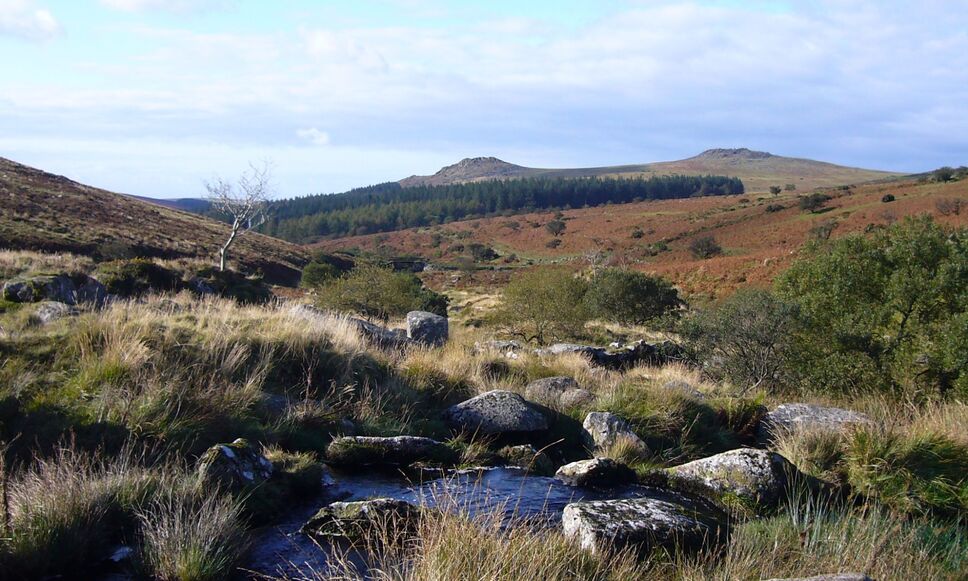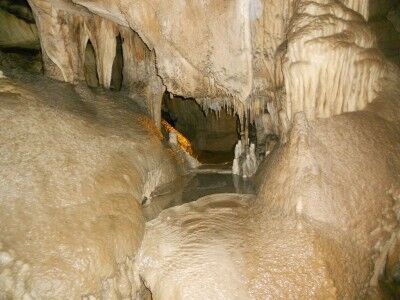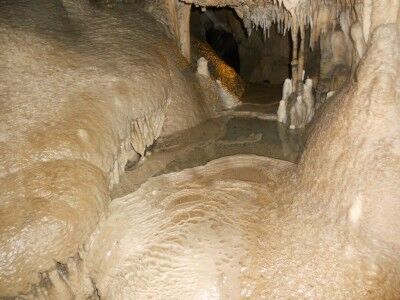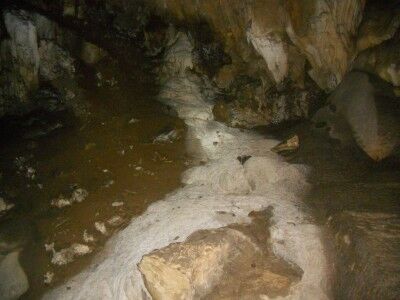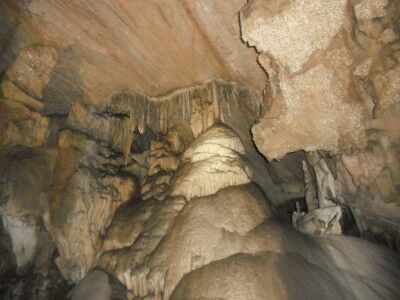There are several opportunities to see “cave pearls” when exploring Crystal Cave in Sequoia National Park (CA). Cave pearls form when acidic water drips onto grains of sand or tiny stones. The dripping water causes the grains to move so that they do not attach to the cave floor while the calcite within the water causes the grains of sand to grow into bigger pebbles (and then rocks) as more and more calcite covers them. This is a cave pearl found among the rimstone dams in the Fairy Pools formation in the Dome Room at Crystal Cave.
